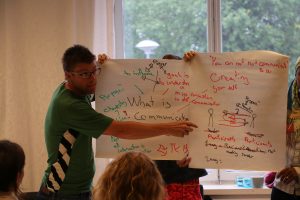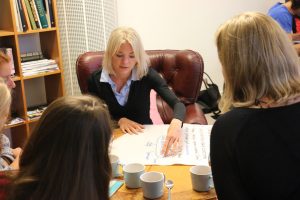The opening week of the introductory module to Environmental Communication gave us a fresh taste of this vast topic.
In a way, I believe this was to help us explain to our friends what is environmental communication??
What even is it that we’re studying? Do… we… communicate about the environment?
All cards on the table, I frankly didn’t know myself what this was when I enrolled in the program. I just knew intuitively that a big reason why environmental issues are so difficult to resolve, or even make progress on, is due to ineffective communication — between experts and policy-makers, between children and parents, between extremists and the blissfully ignorant.
Scientists can do all the research they want, and Greenpeace activists can scream until they’re blue in the face, but nothing will change until we bridge the gap between the knowledge we already have and the everyday habits of us people.
The issues are overwhelmingly complex, and won’t be tackled without any clarity about what I can do as an individual without direct power over anyone else.
It is easy to feel hopeless. Or decide that as long as I recycle and turn the lights off, that’s enough. (A clue: we’re all doing way more than that to make the problems worse; it’s going to take way more to help out.)
Many of the people I know who are well aware of these issues, and who are doing the hearts’ best to adapt their habits to continue their lives with a good conscience, feel anxious, frustrated, angry or resigned. They are amazingly brave souls who continue the fight in spite of how daunting the challenge is, yet they would not wish this lifestyle upon anyone. Some don’t want to have children — why would I put someone in this miserable worlds?
There is a lot I could comment about this view, but for now I just hope we can see how unattractive this perspective is to, say, a teenager or a young student who is exploring his freedom and identity, and is mostly interested in feeling good in the moment, every moment. Easy access to distractions like the internet and chemical stimulants like high-sugar foods and alcohol leaves them with little emotional resilience to cope with such a heavy psychological burden as the future of life as we know it. Why would they ever want to accept these exhausting beliefs and responsibilities? Why, when it is so much easier to choose blissful ignorance?
Of course, there are a hundred million other perspectives and issues here.
But I hope you’re hearing me: How will we understand what to do unless we communicate? And the other side of the same coin: How will what I can do have a larger impact unless I communicate with others?
So I embarked on this course on a gut feeling that this is the bridge we need to build, and I wanted to learn how.
This program is so much more.
We’re learning not only how the bridge can be built and why it must, but also that the bridge already exists, built by primitive architecture, broken by fear and burnt by mistrust. New technology is promising and relied upon to help patch up the holes and leaks, yet I see that the foundation — compassion, empathy, heart connection — and the raw materials — love, dedication, courage, trust, camaraderie — are somewhat overlooked.
The first week of this course actually began to establish these foundations and raw materials within the class. Rather than being bombarded with monotone lectures in dark rooms only lit up by the projector, we got to know each other through games, group projects, presentations and even several role plays. We were also introduced to some of the researchers of the department — again through small group discussions rather than lectures — in a cozy world café.

At the world café, us students got an opportunity to explore topics of EC, discussing them with established ECers. Each researcher presented a topic with a specific question to us. We formed groups around the questions we were most interested in, and circled around to carry the discussions further and deeper.

The class is international, and we have diverse academic backgrounds from the social and natural sciences. United by similar values and a deep caring for the environment, we enrich the discussions with multiple perspectives and dimensions.
It is wonderful to see what kind of people are attracted to such a course. You know how there’s always at least one dude in class who’s a total nail in your eye, well none of that here! I can’t wait to get to know them all over time.
I am enthralled with this first week, humbled to be part of such a wonderful class and grateful for this opportunity, and everything that has led me here.
My undergraduate degree killed my former passion for dinosaurs — brutally — and I felt uneasy already the first week. I had my doubts about returning to academia. So glad to find them misplaced!

Thank you for giving this brief about the course,
I am eagerly waiting for the application process to open so i can put my applications in, and so far i am torn between this course, agroecology and rural development
Stay tuned!
You’ll love what’s coming up in week 5!!